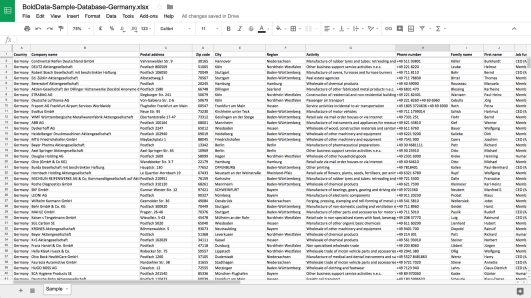In database design, database normalisation is a critical process that ensures data is stored efficiently, consistently, and accurately. Normalisation is essential for any organization that relies on a database for daily operations, ensuring that data can be accessed and analyzed quickly and effectively. This article will explore database normalisation, its benefits, common techniques, challenges, and how it is used in practice.
What is Database normalisation?
It is the process of organizing data in a database by dividing large tables into smaller ones, thereby reducing data redundancy and improving data integrity. Normalisation aims to ensure that each data element is stored only once and that data is organized logically into separate tables to avoid duplication. The normalization process involves a series of steps, each corresponding to a specific normal form. The different normal forms include 1NF, 2NF, 3NF, BCNF, 4NF, and 5NF.
Benefits of Database normalisation
There are several benefits of , including reduced data duplication, improved data consistency and accuracy, simplified data maintenance, better query performance, and more efficient use of storage space. By reducing redundancy, normalisation makes it easier to maintain the database, update records, and ensure that the data is consistent and accurate. Normalisation also helps to improve query performance by reducing the number of joins needed to retrieve data.
Common normalisation Techniques
Normalisation techniques include atomicity, decomposition, redundancy removal, foreign key relationships, and join tables. Atomicity ensures that each attribute in a table is atomic and contains a single value, while decomposition involves breaking down tables into smaller ones to reduce redundancy. Redundancy removal eliminates duplicate data by creating separate tables for each data type. Foreign key relationships ensure data is linked across tables, while join tables facilitate many-to-many relationships between tables.
Challenges of Database normalisation
Despite its benefits, its has challenges. Normalisation can make the database design more complex, leading to performance issues with complex joins. Additionally, normalisation requires skilled database designers who understand the process and can implement it effectively.
Database normalisation in Practice
Normalisation is an essential aspect of database design, and it is used in various industries, including finance, healthcare, retail, and manufacturing. To implement normalisation, designers often use tools such as ER diagrams and normalisation tools to simplify the process.
Example of Normalizing a Database
Suppose a company has a database containing information about employees, their departments, decision makers and the projects they are working on. A normalized version of this database might involve separating each data type into its table, with each table containing only the relevant data. The employee table might contain the employee ID, name, address, and department ID. The department table might contain the department ID, department name, and manager ID, while the project table might contain the project ID, project name, and employee ID.
Something to Ponder On
Database normalisation is a critical process in database design that ensures data is organized efficiently and accurately. By reducing data redundancy and improving data consistency and accuracy, normalisation helps to improve query performance, reduce storage space, and simplify data maintenance. While there are challenges associated with normalisation, the benefits of this process outweigh the costs. As businesses continue to generate more data, it will remain a critical aspect of database design for the foreseeable future.
Do you want to buy a “pre normalized” company database? Simply tell us in which countries you need data? Get on the phone on +31(0)20 705 2360 or send an e-mail to info@bolddata.nl.
Based on that you will receive a free quote and a detailed report. On request we can provide a free sample with a selection of 10 contacts.

